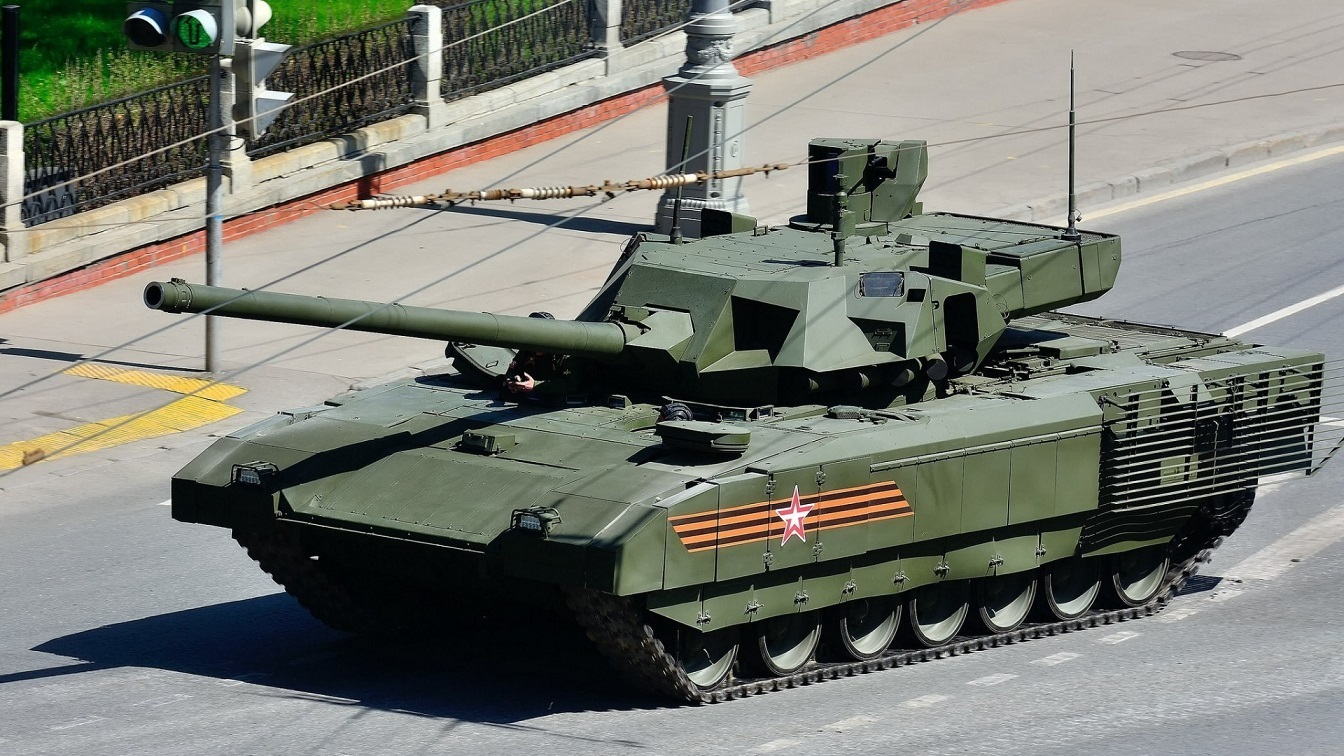Russia’s T-14 Armata Tank – Fighting in Ukraine or Not? RUMINT is a slang acronym I first encountered in Richard Marcinko’s Rogue Warrior book series. William Alan Reinsch of the Center for Strategic and International Studies gives a useful definition, calling RUMINT “a portmanteau word — an amalgam of rumor and intelligence — that is used in Washington to describe the reliability of information being passed on; namely, that it’s usually more or less worthless but fun to talk about anyway.”
There seems to be no shortage of RUMINT about Russia’s latest so-called super tank, the T-14 Armata main battle tank. RUMINT has it the T-14 is being finally sent to Ukraine to bolster Vladimir Putin’s “special military operation” against that war-ravaged nation.
But how do we separate rumor from reality when it comes to the Armata? With a video out there on the internet supposedly showing the T-14 in Ukraine what should we believe?
T-14: Brief History and Specifications
The T-14 Armata was designed in 2014 and manufactured by the Uralvagonzavod joint stock company in Nizhny Tagil, Russia.
The Russian government decided to publicly unveil the tank at their 70th Victory Day parade in Moscow, in May 2015. As noted back then by Peter Weber in The Week, “The Armata, expected to be the centerpiece of Russia’s ground forces for years if not decades, is full of cutting-edge technology, both offensive and defensive…And it has room to grow.”
Among the features that make the T-14 seem so cutting-edge is a digital weapons control system that tracks targets, directs the MBT’s movements — exemplified by a pioneering remote-controlled turret — and automatically deploys the tank’s explosive reactive armor protection.
The three-person crew, instead of being ensconced within that automated turret, are placed in an armored capsule within the tank’s hull.
The T-14 even comes with a toilet. In the words of Ilya Baranov, the director for quality and information technologies at the Urals Design Bureau of Transport Machine-Building, “A major hassle for them [tank troops, that is] is that they cannot relieve their natural functions.
That is, water and field rations are available in the tank, but all the other conveniences are, unfortunately, absent. Only the Armata vehicles solved this dilemma. From the very outset, this tank provides this possibility for a crew to perform lengthy combat missions, that is why the so-called life support system or, simply speaking, a lavatory, is available in it.”
Armament consists of a 125mm main gun with a reported effective range of 5 kilometers and a maximum range of 12 km.
This is backed by a 12.7mm Kord machine gun and a 7.62mm PKTM machine gun. The Armata’s weight is 55 tons, its length is 35 feet, the width is 11 feet, and height is 11 feet. The T-14’s maximum speed is estimated between 50 and 55 miles per hour.
The Case for the T-14: Fighting the Abrams and Leopard
Besides the psychological (read: propaganda) value of deploying its “super tank” to the Ukrainian battlefield and the potential boost to the sagging morale of Russian frontline soldiers, the T-14 would presumably give the Russians an effective counterweight to the American-made M1 Abrams and German-made Leopard 2 MBTs that are slated to be sent to Ukraine.
For one thing, the Armata has a significant speed advantage over the Abrams, which tops out at 42 mph. Given the M1’s long history of annihilating every other Russian-designed tank it has faced in combat, from the 1991 Persian Gulf War onward, the Russian tankers will need every advantage they can get.
The Case Against It: T-14 Troubles
Alas, there is trouble in Putin’s Paradise for the vaunted T-14. The British Ministry of Defense in January noted that the development of the Russian MBT was “dogged with delays, reduction in planned fleet size, and reports of manufacturing problems.”
The Ministry went on to suggest that Russian armor troops “were reluctant to accept the first tranche of T-14 allocated to them because the vehicles were in such poor condition.” Some of the key reasons behind the rank-and-file reluctance were concerns over the reliability of the new tanks’ engines and thermal imaging systems.
What’s more, even though sending the Armatas to Ukraine may provide some propaganda value, there is of course the risk of blowback if any of these tanks are destroyed on the battlefield. Putin’s PR machine already took a major blow when Russia’s newfangled “Terminator” infantry fighting vehicle was terminated for the first time by Ukrainian defenders.
Would Putin and his generals want to risk a similar humiliation by losing any of their precious T-14s?
MORE: B-21 Raider: China Should Fear America’s New Stealth Bomber
MORE: H-20: China Is Building a New Stealth Bomber

